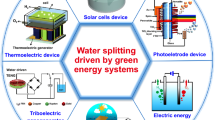Abstract
Antioxidant vitamins and enzymes such as superoxide dismutase, catalase and glutathione peroxidase are considered to function as scavengers against reactive oxygen species and to provide protection against reactive oxygen species, including free radicals. Although antioxidants such as L-ascorbic acid, d-catechin and quercetin dehydrate show superoxide dismutation activity, using reduced water produced in the cathode side by electrolysis as a solvent instead of 2 mM NaC1 solution of the same pH level as the reduced water increased the superoxide dismutation activity of these antioxidants. Moreover, neither the reduced water nor its electrolyte solution showed any superoxide dismutation activity by itself. On the other hand, the reduced water was able to decrease hydrogen peroxide levels. It has been found that the behaviour of H2 in reduced water, which was activated by a platinum electrode, differed from that of H2 introduced by bubbling of hydrogen gas. The former decreased H2O2, whereas the latter did not. These results suggest strongly that the increase in superoxide dismutation activity, with a proton donor such as L-ascorbic acid, is due to an increase in the dissociation activity of water while the scavenging activity for H2O2 is due to activated dissolved H2 in the reduced water.
Similar content being viewed by others
References
Y. Yamamoto, E. Niki, J. Eguchi, Y. Kamiya and H. Shimazaki, Biochemica et Biophysica Acta 819 (1985) 29.
S.V. Jovanovic and M.G. Simic, J. Am. Chem. Soc. 108 (1986) 5968.
K. Sato, E. Niki and H. Shimazaki, Biochem. Biophys. 279 (1990) 402.
E.R Stadtman, Science 257 (1992) 1220.
L. Packer and J.J. Fuchs, 'Vitamin C in Health and Disease' (Marcel Dekker, New York, 1997).
R.S. Sohal and R. Weindurch, Science 273 (1996) 59.
J.M. McCord and I. Friedovich, J. Biol. Chem. 244 (1969) 6049.
R. Nicholls and G.P. Schonbaum, 'The Enzyme' (Academic Press, New York, 1963).
P. Amstad, R. Monet and P. Cerutti, J. Biol. Chem. 269 (1994) 1606.
M. Takahashi, J. Tsuchiya, E. Niki and S. Urano, J. Nutr. Sci. Vitaminol. 34 (1988) 25.
P. Palozza and N.I. Krinsky, Biochem. Biophys. 297 (1992) 184.
B. Frei, L. England and B.N. Ames, Proc. Natl. Acad Sci. USA 86 (1989) 6377.
E.J. Nanni, Jr, M.D. Stallings and D.T. Sawyer, J. Am. Chem. Soc. 102 (1980) 4481.
G.S. Omenn, G.E. Goodman and M.D. Thornquist, N. Engl. J. Med. 334 (1996) 1150.
S. Shirahata, S. Kabayama, M. Nakano, T. Miura, K. Kusumoto, M. Gotoh, H. Hayashi, K. Otsubo, S. Morisawa and Y. Katakura, Biochem. Biophys. Res. Commun. 234 (1997) 269.
T. Yoshida, K. Mori, T. Hatano, T. Hatano, T. Okumura, I. Uehara, K. Komagoe, Y. Fujita and T. Okuda, Chem. Pharm. Bull. 37(7) (1989) 1919.
S.V. Jovanović, S. Steenken, M. Tosci, M. Tosic, B. Marjanovic and M.G. Simic, J. Am. Chem. Soc. 116 (1994) 4846.
B.R. Breslau and I.F. Miller, Ind. Eng. Chem. Fundam. 10 (1971) 554.
K. Hanaoka, R. Kiyono and M. Tasaka, J. Membrane Sci. 82 (1993) 255.
R.L. leRoy, J. Electrochem. Soc. 130 (1983) 2158.
Z. Takehara, Electrochim. Acta 15 (1970) 999.
K. Fujikawa, A. Katayama and H. Kita, J. Chem. Soc. Faraday Trans. 175 (1973) 1.
K. Fujikawa and H. Kita, J. Chem. Soc. Faraday Trans. 175 (1979) 2638.
K. Fujikawa, H. Kita and S. Sato, J. Chem. Soc. Faraday Trans. 177 (1981) 3055.
Author information
Authors and Affiliations
Rights and permissions
About this article
Cite this article
Hanaoka, K. Antioxidant effects of reduced water produced by electrolysis of sodium chloride solutions. Journal of Applied Electrochemistry 31, 1307–1313 (2001). https://doi.org/10.1023/A:1013825009701
Issue Date:
DOI: https://doi.org/10.1023/A:1013825009701




